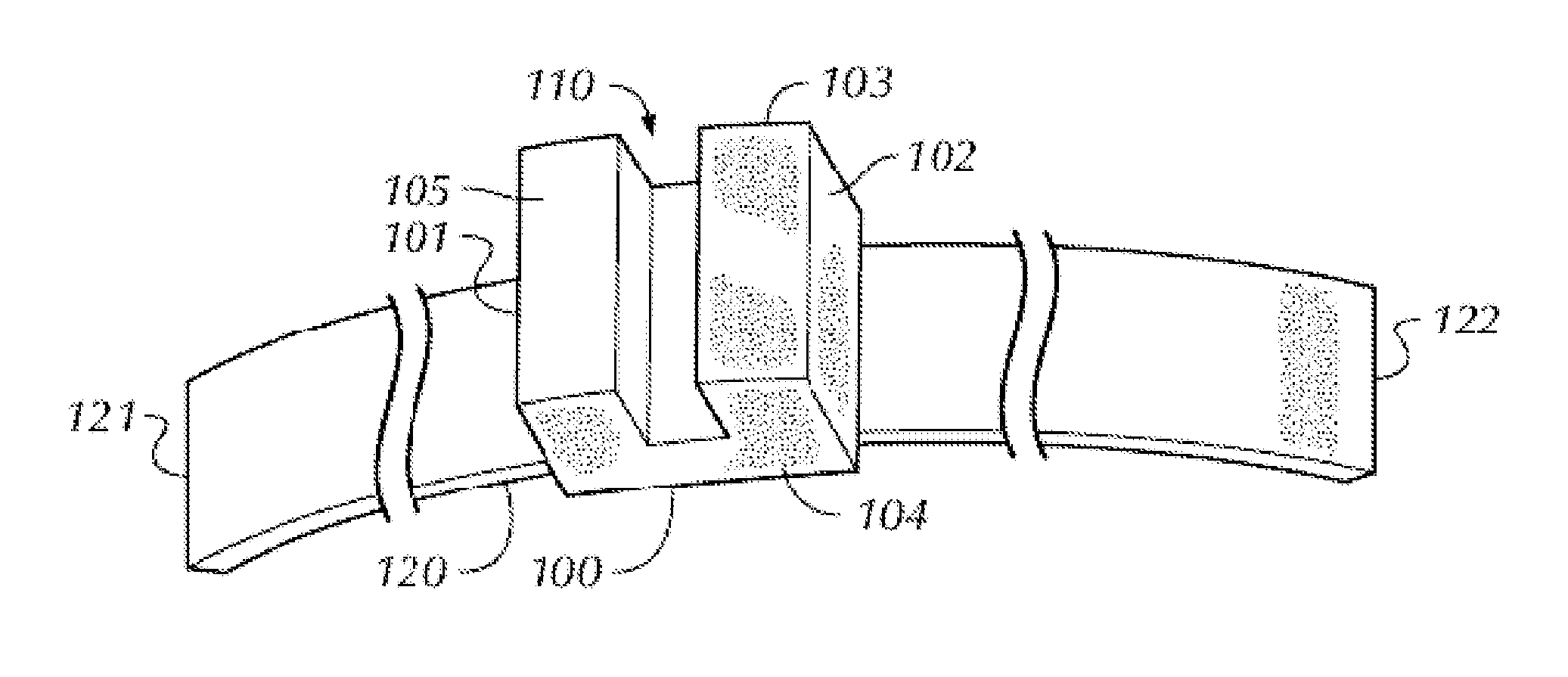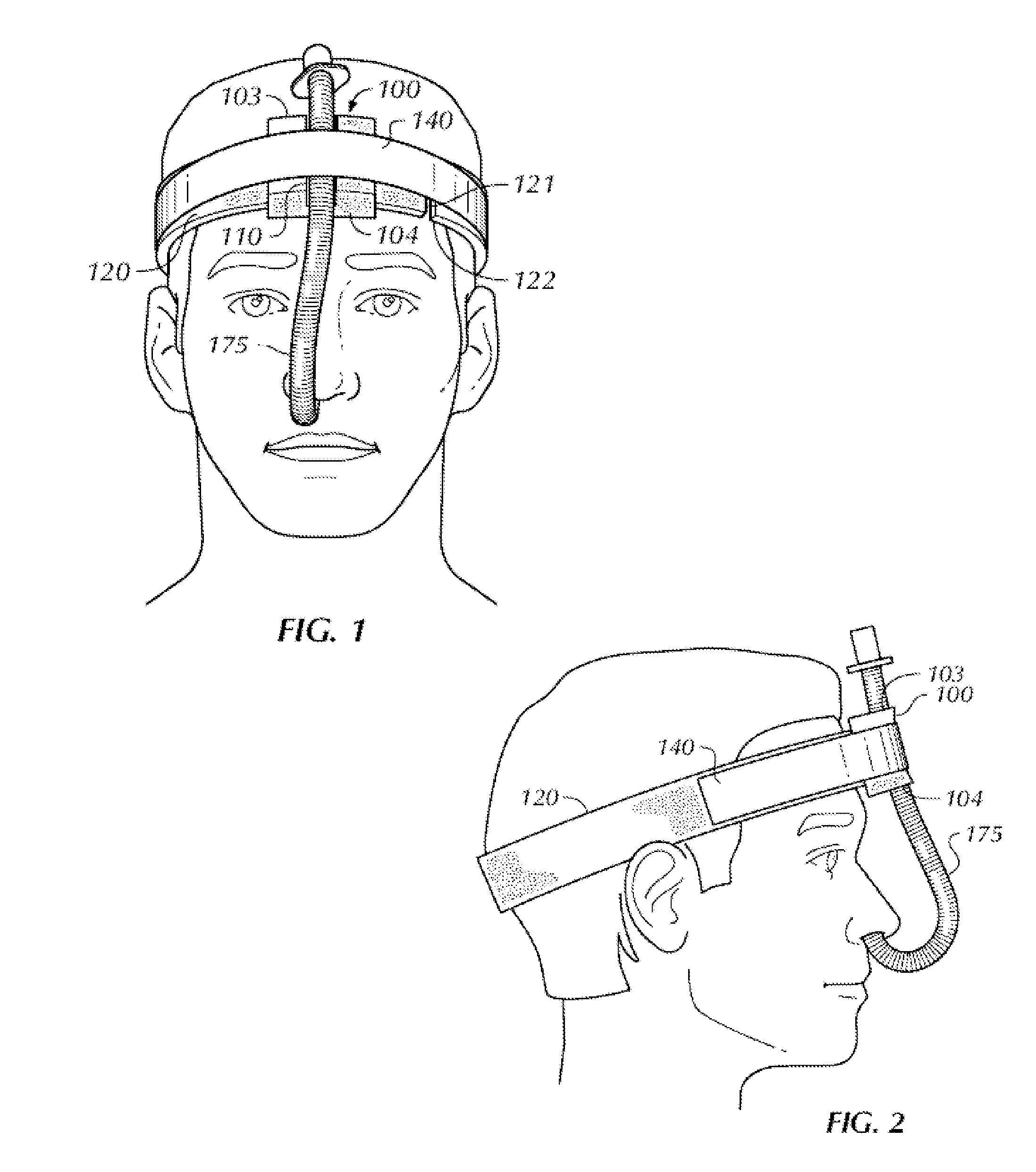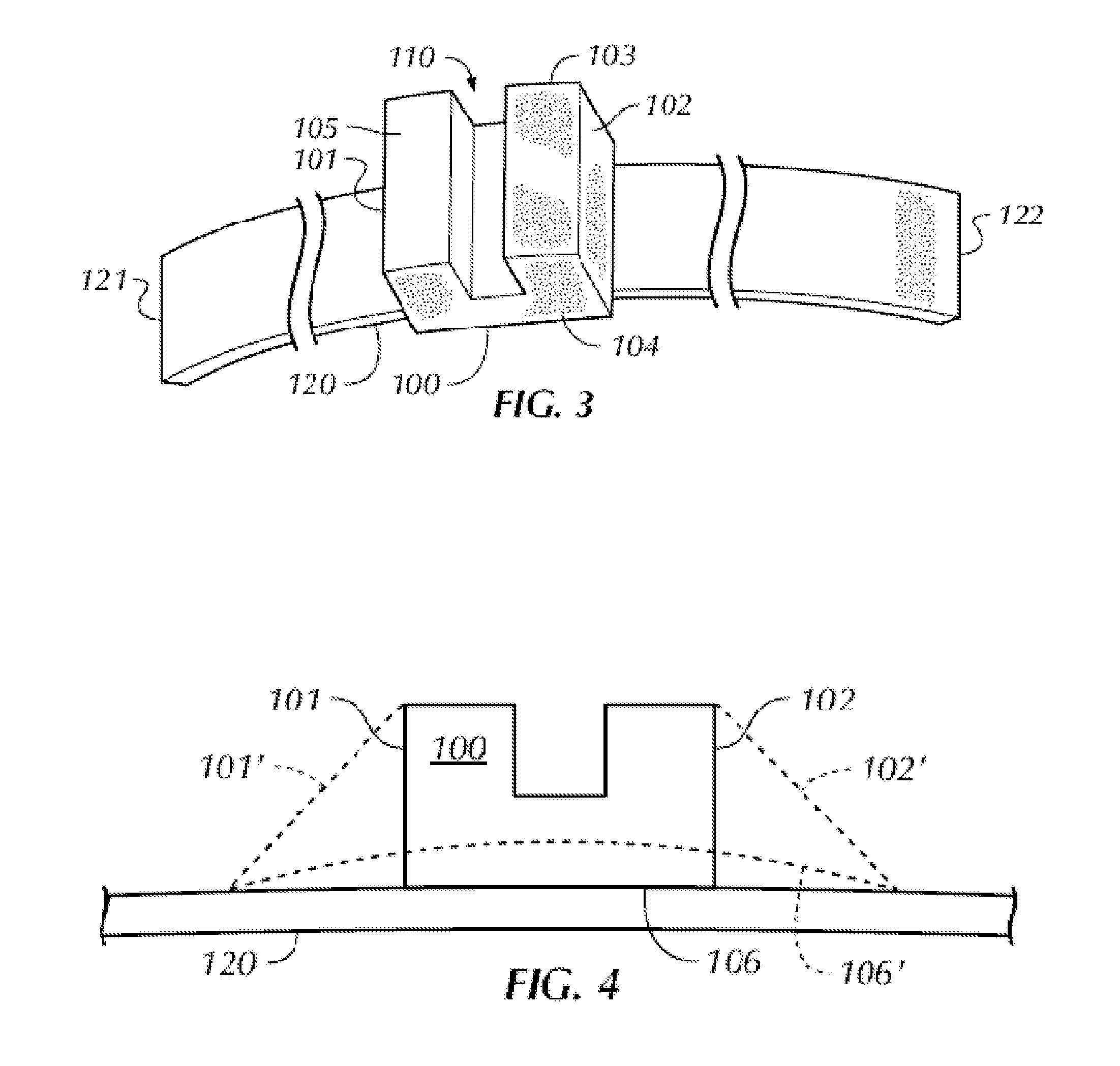Medical Tubing Stabilization Device
a technology for stabilizing devices and medical tubing, which is applied in the direction of breathing protection, infusion needles, other medical devices, etc., can solve the problems of obstructing access, affecting the operation of surgeons,
- Summary
- Abstract
- Description
- Claims
- Application Information
AI Technical Summary
Benefits of technology
Problems solved by technology
Method used
Image
Examples
Embodiment Construction
In accordance with the invention the foregoing advantages have been achieved through the present nasotracheal tubing stabilizing device. The present invention includes a substantially U-shaped compressible foam block. The block being comprised of opposing, substantially parallel superior and inferior surfaces and opposing substantially parallel anterior and posterior sides substantially perpendicular to the superior and inferior surfaces. The block further being comprised of opposing left and right sides and having a superior central depression, or channel, along its superior surface extending from the anterior to posterior surfaces, said channel having a depth of less than half of the length of the sides of the block. The length being determined as the distance from the anterior to the posterior surfaces.
Standard nasotracheal tube diameters vary from 4.5 mm to 8.5 mm depending on the size of the patient. In the preferred embodiment, the superior central depression would have a dept...
PUM
 Login to View More
Login to View More Abstract
Description
Claims
Application Information
 Login to View More
Login to View More - R&D
- Intellectual Property
- Life Sciences
- Materials
- Tech Scout
- Unparalleled Data Quality
- Higher Quality Content
- 60% Fewer Hallucinations
Browse by: Latest US Patents, China's latest patents, Technical Efficacy Thesaurus, Application Domain, Technology Topic, Popular Technical Reports.
© 2025 PatSnap. All rights reserved.Legal|Privacy policy|Modern Slavery Act Transparency Statement|Sitemap|About US| Contact US: help@patsnap.com



